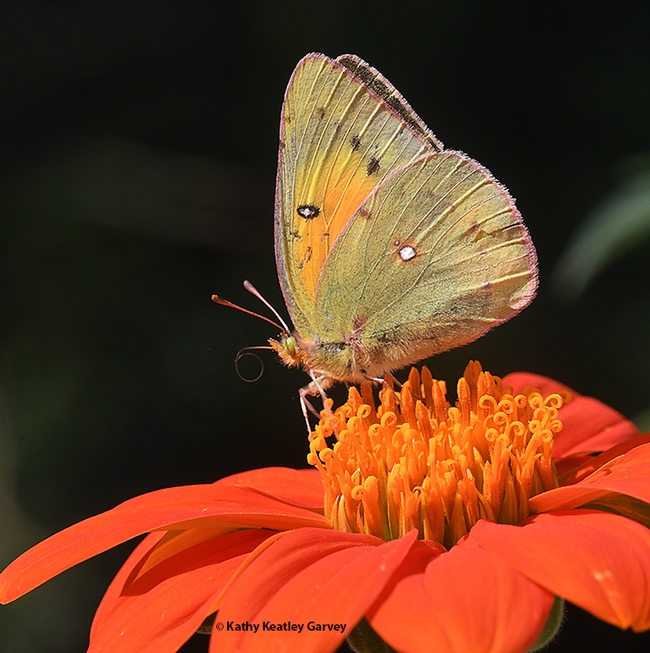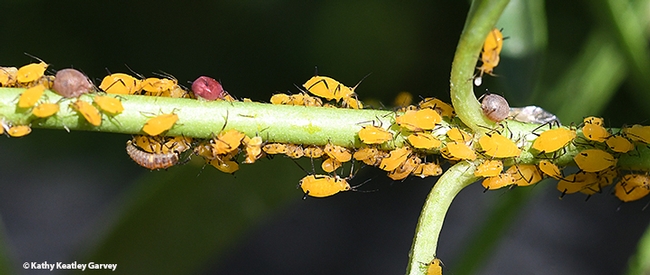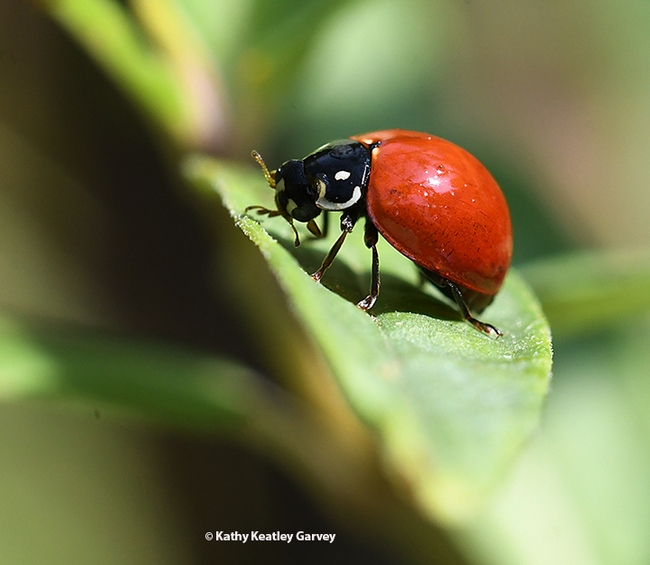- Author: Kathy Keatley Garvey
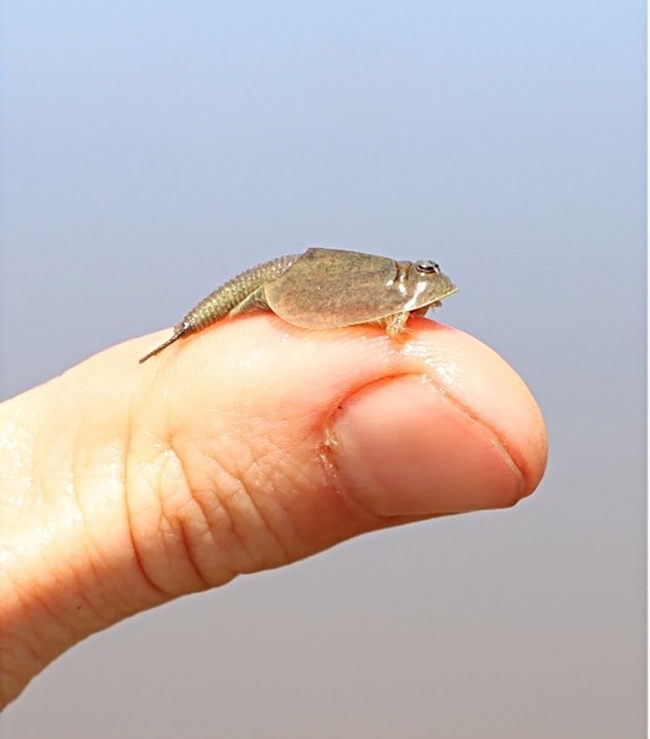
It's neither a tadpole nor a shrimp, but a crustacean pest that feasts on rice seedlings in flooded rice fields.
Rice growers currently rely heavily on pyrethroid insecticides to manage tadpole shrimp.
At the Entomological Society of America meeting this week in Denver, agricultural entomologist and Cooperative Extension specialist Ian Grettenberger of the UC Davis Department of Entomology and Nematology and his colleagues proposed alternative management.
Grettenberger's poster, “Past Pyrethroids: Alternative Management Approaches for Tadpole Shrimp in Rice,” offers non-pesticide alternatives, including the use of mosquitofish.
Collaborative research with UCCE Butte County director and Rice Farming Systems Advisor Luis Espino and UC Davis staff research associate Kevin Goding, indicates that mosquitofish proved able to suppress shrimp populations.
“Tadpole shrimp (Triops longicaudatus) are an early-season pest in California rice,” Grettenberger explained in his abstract. “Soon after flooding, eggs hatch and growing shrimp are soon large enough to damage germinating rice seedlings. Currently, pyrethroid insecticides are heavily relied upon for management, as they are in many cropping systems, because of their efficacy and low cost. However, contamination of surface waters is a concern, as is insecticide resistance.”

“In addition, we used large square metal plots to evaluate if a fish released for mosquito control, mosquitofish (Gambusia affinis), could suppress shrimp populations. We found that a number of materials could suppress shrimp populations, while unregistered materials did not provide sufficient control. Mosquitofish also proved able to suppress shrimp populations, although extremely high shrimp populations could escape predation and shrimp could outgrow risk to predators. These results could help a field crop industry move beyond pyrethroids, which will be important to address issues of environmental contamination or regulatory changes as well as changes in susceptibility.”
Deep Look Video. Tadpole shrimp recently made the national news in two ways, Grettenberger said. First, they made news with the sudden appearance of tadpole shrimp following monsoon rains this summer in an ancient ceremonial ball court at the Wupatki National Monument in northern Arizona (https://www.livescience.com/dinosaur-shrimp-emerge-arizona). In October, KQED's Deep Look released a new video, “Tadpole Shrimp Are Coming For Your Rice," the work of lead producer and cinematographer Josh Cassidy and other members of the Deep Look crew. (See https://youtu.be/T2xnXaX7r3g.) Grettenberger assisted with the project, providing tadpole shrimp and taking some of the video clips used in the five-minute video.
“Much of his shooting was in my garage,” the UC Davis entomologist said, “so I get to see just how much effort and care goes into producing these videos. They end up pretty short, but that doesn't mean it is simple to get all the pieces together.”
“This tadpole shrimp is coming for your rice,” the narrator said. “Hungry hordes of them find their way into the ice fields of California's Central Valley and go to town munching on the young seedlings. But where did they come from, with the ocean so far away? A couple of weeks ago, this was just a dry dusty field. Turns out they were here all along.”
Deep Look referred to them as “time travelers,” as the eggs of shrimp tadpoles can be viable for decades and hatch when the rice growers flood their fields. "At the very least, they have survived as eggs since last season," Grettenberger noted.
The pests are neither tadpoles or shrimp but are fresh-water crustaceans descended from the ocean. “They look like tiny horseshoe crabs,” Grettenberger told Deep Look. “It's obvious when rice fields have lots of tadpole shrimp in them, because they stir up the mud making the water look a bit like chocolate milk. There will also be shrimp zooming around, many upside down at the surface, popping up for a few seconds before disappearing back into the murkiness."
Adult tadpole shrimp cannot survive when the soil dries out. But Grettenberger said their eggs have a rugged outer layer called a “chorion” that protects the eggs from desiccation.
“They've been living this way for hundreds of millions of years-- since before the dinosaurs-- waiting out droughts, changing climates, even global catastrophes,” KQED relates in the video. “In a world where the future is unpredictable, tadpole shrimp are the ultimate survivors.”
Grettenberger, who joined the UC Davis Department of Entomology faculty in January, 2019, focuses his research on field and vegetable crops; integrated pest management; applied insect ecology; and biological control of pests.
Additional Information:
- Resource on tadpole shrimp, UC Statewide Integrated Pest Management Program (co-authors, the late Larry Godfrey, Cooperative Extension specialist, UC Davis Department of Entomology and Nematology; Luis Espino, UC Cooperative Extension; and Sharon Lawler, professor, UC Davis Department of Entomology and Nematology
- "Effect of Rice Winter Cultural Management Practices on the Size of the Hatching Population of Triops longicaudatus (Notostraca:Triopsidae) in California Rice Fields" (Co-authors Larry Godfrey,
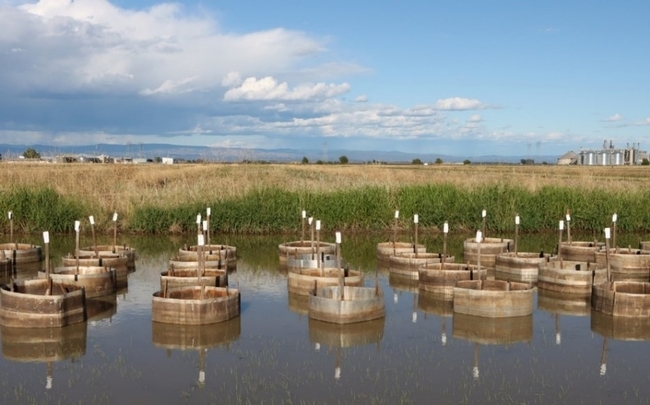
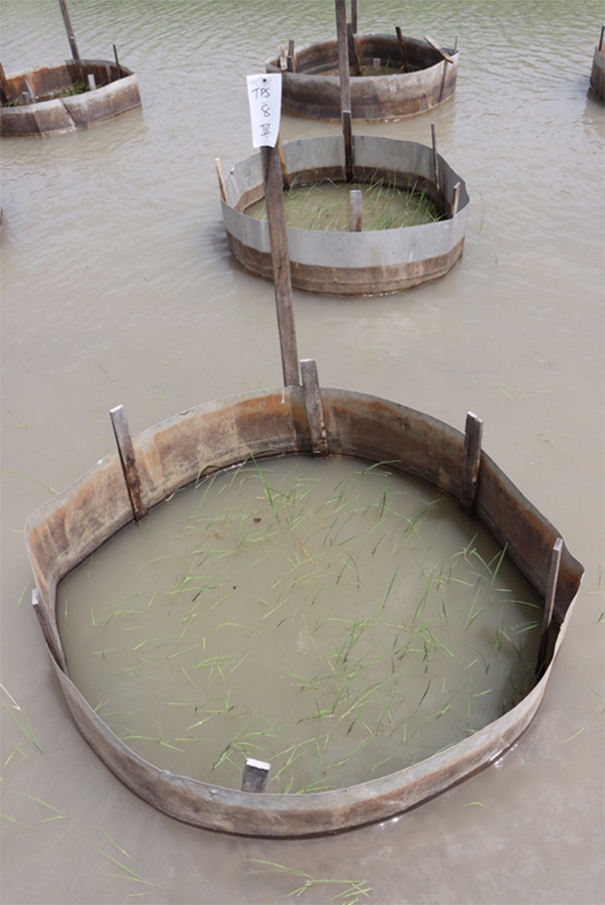
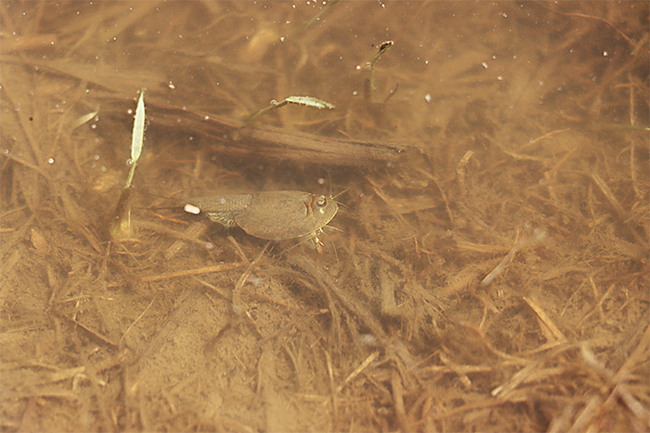
- Author: Kathy Keatley Garvey
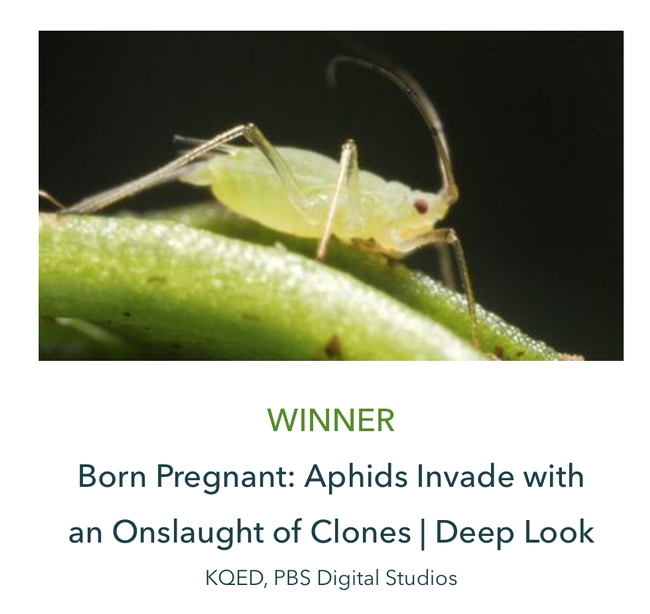
UC Cooperative Extension specialist and agricultural entomologist Ian Grettenberger of the UC Davis Department of Entomology and Nematology faculty, assisted with the KQED Deep Look video, "Born Pregnant: Aphids Invade with an Onslaught of Clones," that won a nature award equivalent to an Oscar.
Grettenberger provided his expertise--and some aphids--working with digital video producer Josh Cassidy, senior video producer for KQED Science and the lead producer and cinematographer for Deep Look, a short-form nature series that illuminates fascinating stories in the natural world.
Cassidy's aphid video scored an international Jackson Wild Media Award, winning first place in the category, "Animal Behavior, Short Form video (17 minutes or less)."
In selecting it as the best film in its category, the judges related that it "most effectively explores animal behavior in an innovative and illuminating way."

The aphid video came about when Cassidy approached Grettenberger looking for researchers working on aphids. "I told him I wasn't working in the lab with aphids, but he could come check out my garden, which happened to be chock full of them," Grettenberger related.
"It was almost all shot at my house/garden," Grettenberger said. "With COVID being a thing, Josh got to sit in my garage and shoot aphid videos. I helped some to form the story, and the final shots of the developing larvae/parasitoid were some I took since Josh couldn't sit around waiting for the parasitoid larvae to develop." Grettenberger is pictured in one of the frames.
The video reveals that "female aphids are the matriarchs of a successful family operation--taking over your garden. But don't lose hope; these pests have some serious predators and creepy parasites looking to take them down."
Comments posted on YouTube include:
- "You guys are just nailing it with this production and sound effects. Amazing!!"
- "BRILLIANTLY DONE!! Makes you want to "love" aphids !!!"
- "One more amazing video from this amazing channel! You guys rock!"
- "Deep Look is a phenomenal YouTube channel. The videos are so beautiful. I can't believe how their team keeps making epic after epic biologically significant videos."
Cassidy, who holds a bachelor's degree in wildlife biology from Ohio University and pursued research on marine mammals, studied science and natural history filmmaking at San Francisco State University and Montana State University. A long-time member of the Deep Look team, he is known for his excellent work in creating innovative and fascinating videos. See some of his science videos here.
Grettenberger, who joined the UC Davis Department of Entomology and Nematology faculty in January, 2019, focuses his research on field and vegetable crops; integrated pest management; applied insect ecology, and biological control of pests. He holds a bachelor's degree in biology from Western Washington University and a doctorate in entomology from Pennsylvania State University.
Grettenberger administers a YouTube channel on Pests and Natural Enemies. One of his most popular videos is his post on Lady Beetle Larvae and a Baby Aphid--Scoop, Scoop, Chomp Chomp: "A lady beetle larvae (Coccinella septempunctata--seven-spotted lady beetle) making short work of this baby aphid. You can see how they can eat *many* per day and help regulate aphid populations. (Predation part slowed down to 50%. They chow down more quickly). This is pea aphid, which can be a pest of alfalfa and other legume crops."
From KQED website: "KQED, a National Public Radio (NPR) and Public Broadcasting Service (PBS) affiliate in San Francisco, serves Northern California and beyond with a public-supported alternative to commercial TV, radio and web media. Funding for Deep Look is provided in part by PBS Digital Studios. Deep Look is a project of KQED Science, the largest science and environment reporting unit in California. KQED Science is supported by The National Science Foundation, the Dirk and Charlene Kabcenell Foundation, the Vadasz Family Foundation, the Gordon and Betty Moore Foundation, Campaign 21 and the members of KQED."
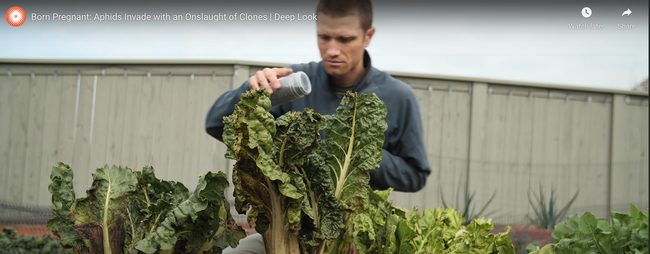
- Author: Kathy Keatley Garvey
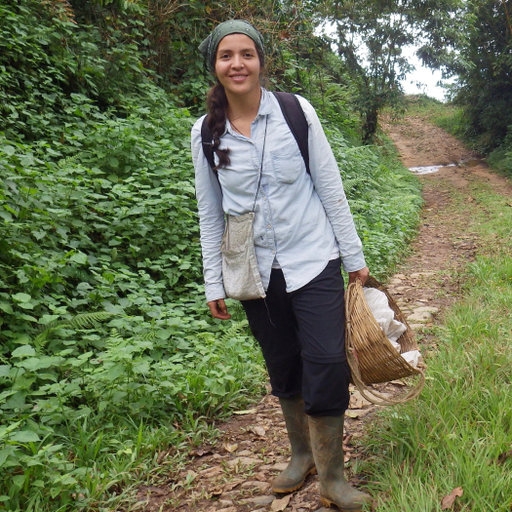
Agroecologist Estelí Jiménez-Soto, a postdoctoral scholar/lecturer at UC Santa Cruz, does.
She will speak on "A Complex Cup of Joe: Biodiversity, Pest Control and Political Ecologies in Mexican Coffee Agroforests" at the UC Davis Department of Entomology and Nematology virtual seminar at 4:10 p.m., Wednesday, Feb 10.
Host is Extension agricultural specialist Ian Grettenberger, who coordinates the department's seminars. Access the Google form link here to attend the seminar.
"Coffeeagroforests are great for biodiversity conservation and sustain millions of families and national economies," Jiménez-Soto says in her abstract. "Within these shaded agroecosystems, a complex network of interactions and the availability of resources maintain coffee pests in check, particularly the coffee berry borer, the most devastating insect pest for coffee. Despite the importance of biodiversity conservation and maintenance of shade in these systems, the life of people is often at odds with conservation efforts and management practices, revealing social inequalities and contradictions in plantation-like agricultural systems. In this presentation, I share socio-ecological complexities in the coffee-biodiversity nexus, focusing on ants as biocontrol agents, and the everyday lived experience of farmworkers in Mexican coffee agroforests."
Overall, Jiménez-Soto describes her research as "at the intersection of agroecology and political ecology of agriculture to understand the socioecological entanglements of food production and biodiversity conservation in Mexico and the United States." Using a variety of theoretical and methodological approaches in ecology, anthropology and political ecology, she studies the mechanisms that drive species interactions, and the role of environmental change and agricultural management on insect community dynamics, ecosystem functions, and the every-day lived experience of farmers and farmworkers in coffee agroecosystems. Currently she is working on a project to assess the barriers and opportunities to the adoption of agroecological practices in strawberry production in California and Florida.
Jiménez-Soto was quoted in a National Geographic feature article, "How This Invasive Snail Could Save Your Coffee from Destruction," published on March 10, 2020. Sharing her expertise on both coffee and biocontrol measures, she told writer Forest Ray: "Classic approaches to pest control have often failed to understand this complexity, causing major natural disasters."
She holds a master's degree and doctorate in environmental studies from UC Santa Cruz, receiving her master's degree in 2015 and her doctorate in 2018.
For technical issues involving the seminar, contact Grettenberger at imgrettenberger@ucdavis.edu. A list of the remaining virtual seminars for the winter quarter (with the Zoom links) are here.
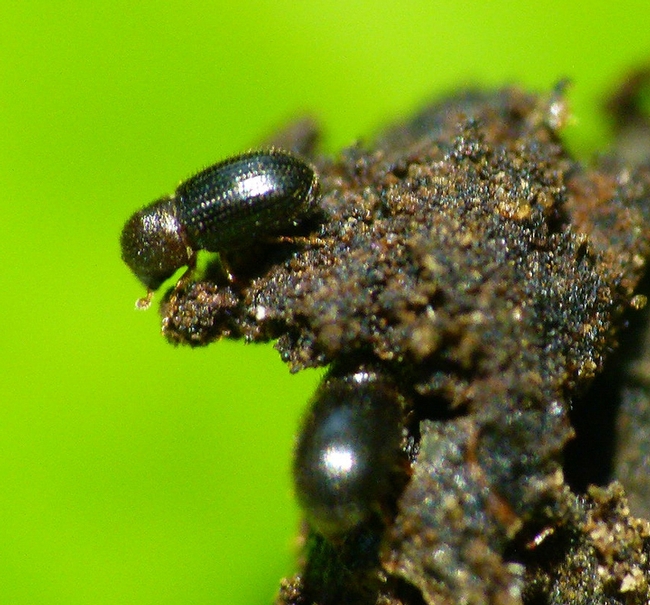
- Author: Kathy Keatley Garvey
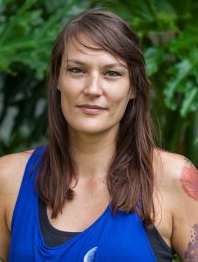
Agricultural Extension specialist Ian Grettenberger, coordinator of the UC Davis Department of Entomology and Nematology's seminars, has lined up the remainder of the seminars, all to be held on Wednesdays at 4:10 p.m. (PST). Here are the speakers and dates. He'll be announcing other information and the Google form links to access the seminars.
Wednesday, Jan. 27
Charissa de Bekker, Ph.D
University of Central Florida, Biology Department
Title: "What Makes a Zombie Ant Tick? Connecting Genomes with Behavioral Phenomes in Ants, Manipulated by a Fungal Parasite."
Website link
Host: Ian Grettenberger
Google form link to virtual seminar
Wednesday, Feb. 3
Shalene Jha, Ph.D
University of Texas, Austin, Department of Integrative Biology
Title: "Plant-Insect Interactions and Ecosystem Services in the Context of Global Change"
Website link
Host: Charlie Nicholson, postdoctoral researcher, Neal Williams lab and Elina Lastro Niño lab
Google form link for Zoom info
Wednesday, Feb. 10
Estelí Jimenez-Soto, Ph.D
UC Santa Cruz, Environmental Studies Department
Title: "A Complex Cup of Joe: Biodiversity, Pest Control and Political Ecologies in Mexican Coffee
Agroforests"
Website link
Host: Marshall McMunn, postdoctoral fellow, Rachel Vannette lab
Google form link for Zoom info
Wednesday, Feb. 17
Brian Weiss, Ph.D
Yale University, Department of Epidemiology of Microbial Diseases
Title: "Metabolic Complementation Between Members of the Tsetse Fly Holobiont"
Website link
Host: Geoff Attardo, assistant professor
Google form link for Zoom info
Wednesday, Feb. 24
Jessica Kansman, Ph.D
Pennsylvania State University, Department of Entomology
Title: "To be an Aphid in a Cruel World: How Abiotic and Biotic Stressors Influence Plant-Insect
Interactions"
Website link
Host: Ian Grettenberger
Google form link for Zoom info
Wednesday, March 3
Monika Gulia-Nuss, Ph.D
University of Nevada, Reno, Department of Biochemistry and Molecular Biology
Title: Pending (Her research program investigates the fundamental questions related to vector biology and vector-parasite interaction. She is particularly interested in aspects of invertebrate reproductive physiology, nutrient allocation, and vector competence and population genomics.)
Website link
Host: Geoff Attardo, assistant professor
Google form link for Zoom info
Wednesday, March 10
Romina Rader, Ph.D
University of New England, School of Environmental and Rural Science
Title: Pending (She studies community ecology in agroecosystems)
Website link
Host: Neal Williams, professor
Google form link for Zoom info
Questions? For questions, contact Grettenberger at imgrettenberger@ucdavis.edu.
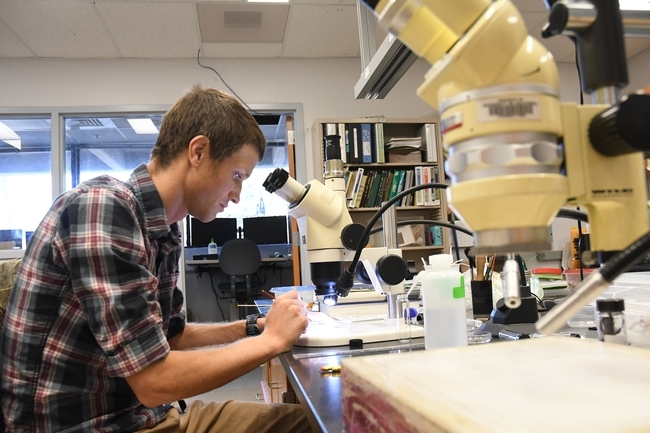
- Author: Kathy Keatley Garvey

Don't miss the UC Davis Bohart Museum of Entomology virtual open house on alfalfa and rice from 11 a.m. to noon on Thursday, Oct. 22.
Cooperative Extension agricultural specialist Ian Grettenberger, assistant professor, UC Davis Department of Entomology and Nematology, and his second-year graduate student, Madison "Madi" Hendrick, will discuss the crops, the pests, and the natural enemies or beneficials.
The good: Think the lady beetle, aka ladybug, that can devour some 50 aphids a day.
The bad: Think the larvae of the alfalfa butterfly, a major pest of alfalfa. Other pests of alfalfa include the Western yellowstriped armyworm, beet armyworm, and alfalfa weevil. Among the pests of rice: armyworms, aster leafhoppers, crayfish, rice leafminers, rice seed midges, rice water weevils and tadpole shrimp.
The bugly: Think all the arthropods--pests and natural enemies.
The event, "The Good and the Bad: Insects and Other Arthropods in Agriculture, with a Focus on California Rice and Alfalfa," will be live-streamed on the Bohart Museum of Entomology's Facebook page. (Link to Facebook live here). Grettenberger and Hendrick will present short talks and then field questions. No personal Facebook account is required to join the session, which is free and open to the public.
As Tabatha Yang, education and outreach coordinator of the Bohart Museum, says: "This is all about the arthropods, both the pests and beneficials that they study in the rice and alfalfa fields." Most of the focus is on insects, but tadpole shrimp in rice fields also will be discussed." A virtual family craft activity on rice is also planned.
"I will be discussing some of the insect (or arthropod) problems faced by growers of rice in California and some of the challenges in managing them, Grettenberger said. "In rice, some of the key arthropod pests are tadpole shrimp, which can turn what would have been a lush stand if rice into a poor stand with a lot of floating seedlings. Meanwhile, later in the year, armyworm caterpillars, the larvae of a moth, can chew on rice leaves and destroy plants. I'll discuss some of the ongoing work to better understand and manage these pests."
Grettenberger, Yolo County Farm Advisor Rachael Freeman Long and Madi Hendrick recently wrote a piece in the UC Agricultural and Natural Resources (UC ANR) blog, Alfalfa and Forage News, "A (Virtual )Update on Worms, Weevils an Aphids in Alfalfa."
The Bohart Museum, directed by Lynn Kimsey, UC Davis professor of entomology, is located in Room 1124 of the Academic Surge Building on Crocker Lane, UC Davis campus, but is temporarily closed. The museum houses nearly eight million insect specimens; a live "petting zoo" of Madagascar hissing cockroaches, walking sticks and taranatulas; and a gift shop stocked with insect-themed T-shirts, books, posters, jewelry, candy and insect-collecting equipment. (Gift items can now be shipped during the closure.)
More information on the Bohart Museum's virtual presentation is available on its website or by contacting Yang at tabyang@ucdavis.edu.
